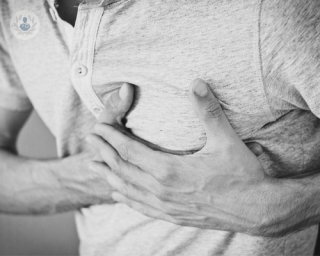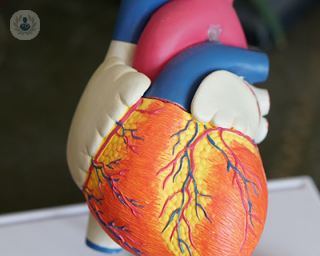Coronary stent
Dr Christopher Malkin - Cardiology
Created on: 09-18-2020
Updated on: 09-21-2023
Edited by: Jay Staniland
What is a coronary stent?
A coronary stent is an expandable cylindrical device, usually made of mesh, which is inserted within a vessel or duct to keep the passageway open and to preserve its shape and functionality. They are used in procedures to treat narrowed or blocked coronary arteries, which restrict blood flow to the heart. The procedure is called a coronary angioplasty, and is performed by a cardiologist.
Coronary stents are made with elastic or bioabsorbable materials, which makes their insertion less traumatic for the blood vessels and guarantees that they are not rejected by the body.

What are coronary stents for?
A stent is usually inserted in case of coronary diseases - especially when the medication is no longer successful, and when the condition is not as severe as to require a vascular bypass.
Stenting can also be helpful for treating an aortic aneurysm affecting the aorta (the main artery of the human body): an excessive dilation of the aorta can cause an internal haemorrhage.
This procedure is not particularly suitable for pulmonary veins, if there is an excessive narrowing, if there is more than one obstruction in the same vein, or if the cardiac muscle is already damaged.
What happens during the procedure?
The stenting procedure is minimally invasive, and is carried out under local anaesthetic. The process is constantly monitored and guided with X-ray. Here is the typical procedure for stent insertion:
- Insertion: a thin tube called a catheter is threaded through a blood vessel in the groin or the wrist, and up tot he coronary arteries.
- Angiography: a contrast dye is injeected through the catheter, and an x-ray image is taken to locate the blockage.
- Balloon inflation: a deflated balloon is threaded through the catheter to the blockage and inflated. This compresses the plaque against the arterial wall, widening the artery and improving the blood flow.
- Stent placement: the stent is crimped to the balloon, and when the balloon is inflated, the stent is expanded and embedded into the arterial wall.
- Balloon removal: the balloon catheter is then deflated and removed leaving the stent in place. The stent acts as a scaffold, holding the artery open.
Under certain circumstances, a dual-therapy stent may be used. That is a drug-releasing stent which can prevent excessive cellular growth such as restenosis, which can be a complication.
Which doctor should I talk to?
If you need to have a stenting procedure, you should see a specialist cardiologist.








